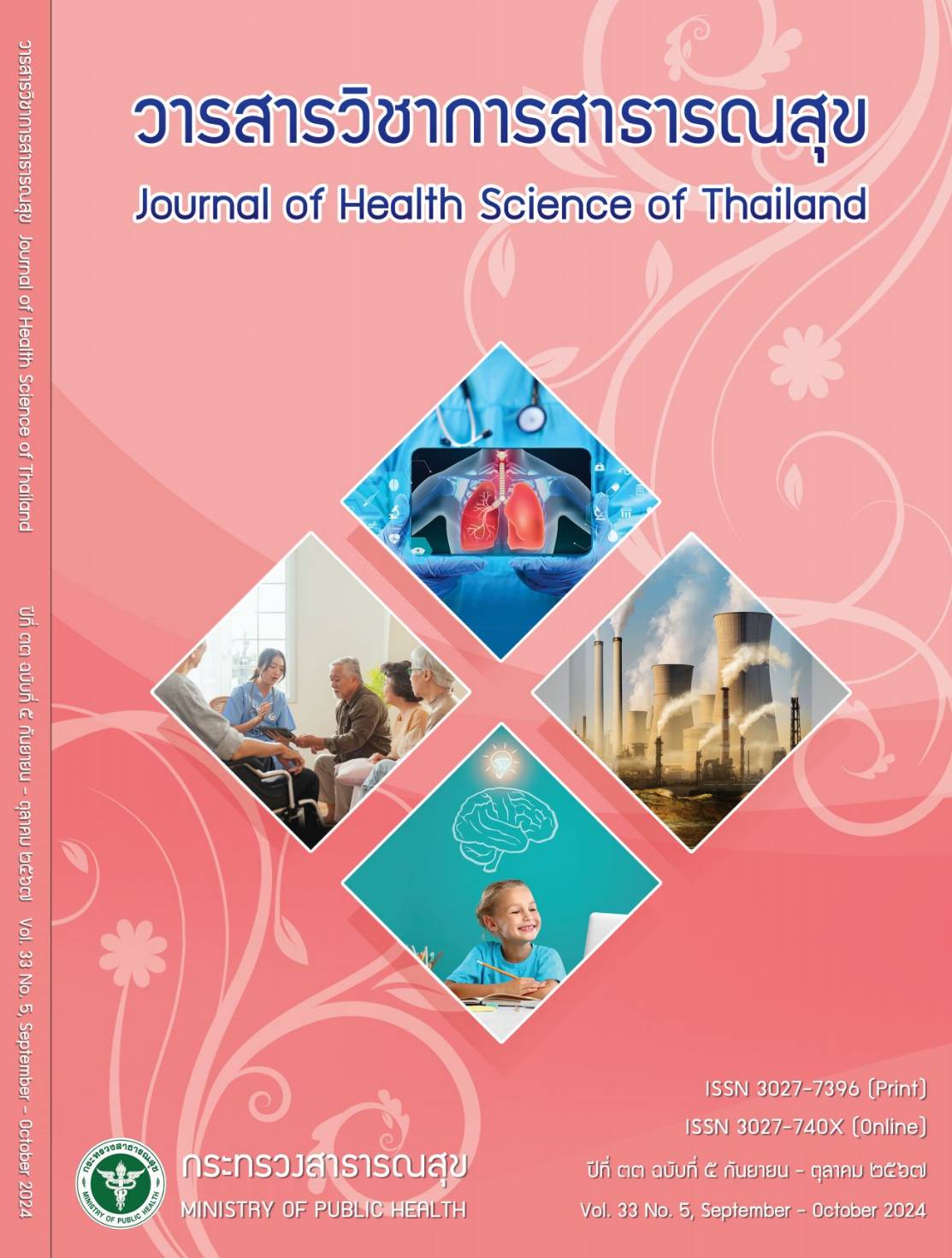Incidence and High-Risk Factors for Developmental Delay and Cerebral Palsy in Children Aged 0-6 Years at Child Development Clinic, Buddhachinaraj Hospital, Phitsanulok
Keywords:
epidemiology, incidence, high risk-factors, developmental delay, cerebral palsyAbstract
A retrospective five-year study was aimed to determine the incidence and biological risk-factors
for developmental delay and cerebral palsy (CP) in 905 children aged 0-6 years who received the
first-visit treatments at the Child Development Clinic, Buddhachinaraj Hospital, Phitsanulok in the fiscal
year: 2014-2018. Medical records were examined. Maternal and infant characteristics and incidence
data were analyzed using descriptive statistics. Biological risk-factors associated with developmental
delay and CP were analyzed using the Chi-Square test, Fisher’s Exact test and Crude Odds Ratio at 95%
confidence interval. Of 905 first-visit cases aged 0-6 years, the incidence of developmental delay was
19.78%, equivalent to 14.13 cases per 1,000 live-births of infants born at Buddhachinaraj Hospital. The
incidence of CP was 11.27%, calculated as 8.05 cases per 1,000 live-births. Biological risk factors that
sigmificantly affected developmental delays (p<0.01) in prenatal period were genetic diseases and preeclampsia.
In perinatal period, two important biological factors were (1) premature births (32-37 weeks
GA) with low birth weight, and (2) full-term births with critical complications. In postnatal period, the
risk-factors included but not limited to bronchopulmonary dysplasia, respiratory distress syndrome, and
patent ductus arteriosus. For cerebral palsy, biological risk-factors included meningitis, brain ischemia,
seizure and birth asphyxia. Most children with CP were diagnosed with bilateral spastic CP. In accordance
with the mission of the Child Development Clinic, Buddhachinaraj Hospital, Phitsanulok emphasizes
importance on early intervention, care, and treatment, and following up on treatment outcomes to help
children develop appropriately or to effectively reduce the risks of delayed development and disabilities.
Downloads
Downloads
Published
How to Cite
Issue
Section
License

This work is licensed under a Creative Commons Attribution-NonCommercial-NoDerivatives 4.0 International License.





